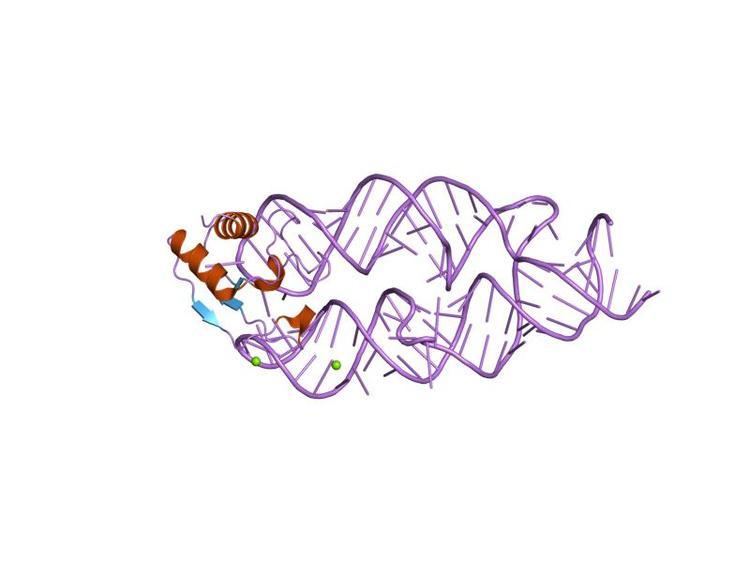Symbol SRP9 HUGO 11304 RefSeq NM_003133 | Entrez 6726 OMIM 600707 UniProt P49458 | |
 | ||
The signal recognition particle (SRP) is an abundant, cytosolic, universally conserved ribonucleoprotein (protein-RNA complex) that recognizes and targets specific proteins to the endoplasmic reticulum in eukaryotes and the plasma membrane in prokaryotes.
Contents
History
The function of SRP was discovered by the study of processed and unprocessed immunoglobulin light chains; newly synthesized proteins in eukaryotes carry N-terminal hydrophobic signal sequences, which are bound by SRP when they emerge from the ribosome.
Mechanism
In eukaryotes, SRP binds to the signal sequence of a newly synthesized peptide as it emerges from the ribosome. This binding leads to the slowing of protein synthesis known as "elongation arrest," a conserved function of SRP that facilitates the coupling of the protein translation and the protein translocation processes. SRP then targets this entire complex (the ribosome-nascent chain complex) to the protein-conducting channel, also known as the translocon, in the ER (Endoplasmic reticulum) membrane. This occurs via the interaction and docking of SRP with its cognate SRP receptor that is located in close proximity to the translocon.
In eukaryotes there are three domains between SRP and its receptor that function in guanosine triphosphate (GTP) binding and hydrolysis. These are located in two related subunits in the SRP receptor (SRα and SRβ) and the SRP protein SRP54 (known as Ffh in bacteria). The coordinated binding of GTP by SRP and the SRP receptor has been shown to be a prerequisite for the successful targeting of SRP to the SRP receptor.
Upon docking, the nascent peptide chain is inserted into the translocon channel where it enters into the ER. Protein synthesis resumes as SRP is released from the ribosome. The SRP-SRP receptor complex dissociates via GTP hydrolysis and the cycle of SRP-mediated protein translocation continues.
Once inside the ER, the signal sequence is cleaved from the core protein by signal peptidase. Signal sequences are therefore not a part of mature proteins.
The composition of SRP
Despite SRP function being analogous in all organisms, its composition varies greatly. The eukaryotic SRP is composed of six distinct polypeptides bound to an RNA molecule (the 7SL RNA), with GTPase activity. The components of the complex are:
The prokaryotic SRP is composed of one polypeptide bound to an RNA molecule (the 4.5S RNA), with GTPase activity. The components of the complex are:
Ffh is the structural and functional homolog of the SRP54 protein in eukaryotes. The 4.5S RNA shares sequence and structural homology with one domain of the larger 7S RNA.
Autoantibodies
Anti-signal recognition particle antibodies are mainly associated with, but are not very specific for, polymyositis. For individuals with polymyositis, the presence of anti-SRP antibodies are associated with more prominent muscle weakness and atrophy.
